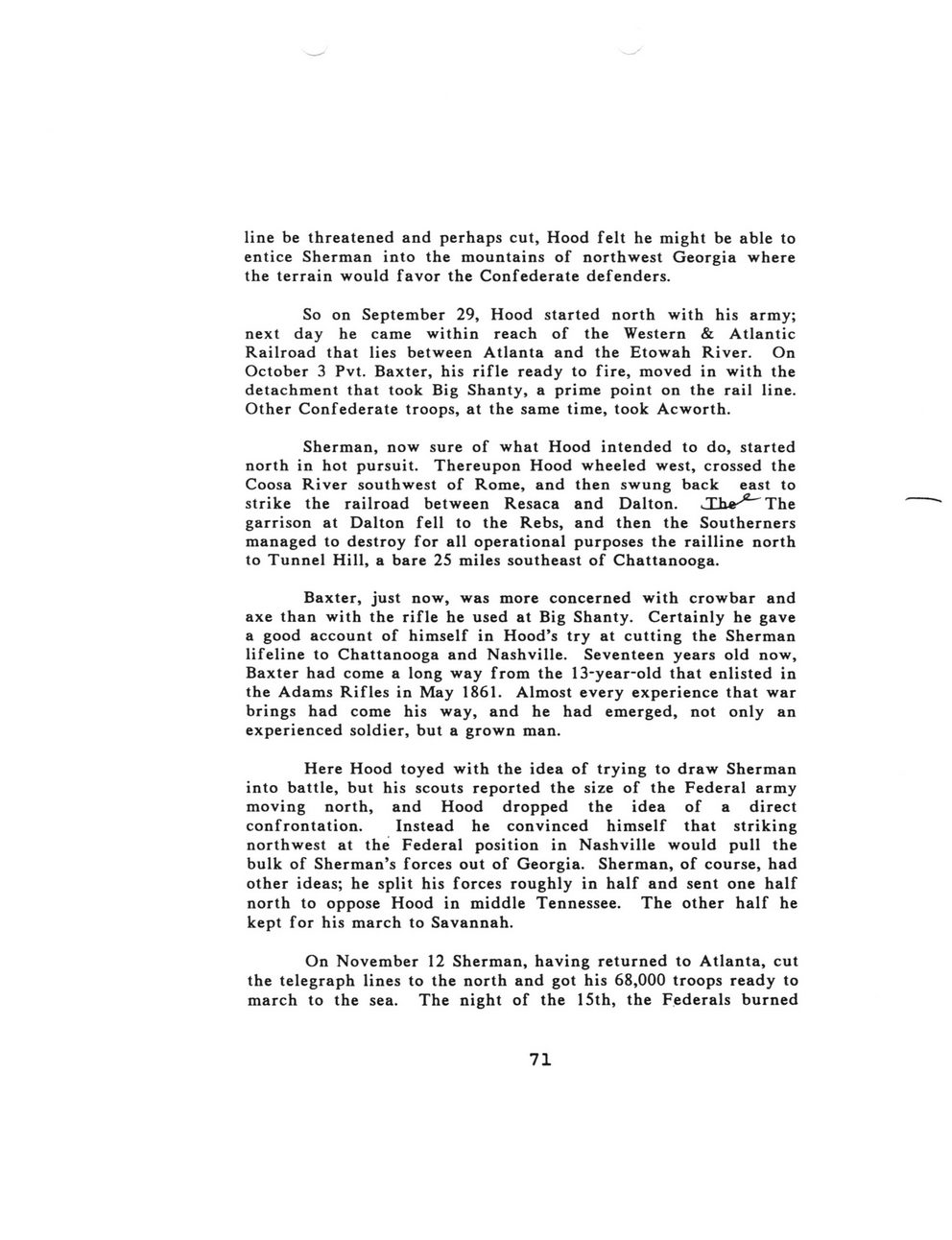This text was obtained via automated optical character recognition.
It has not been edited and may therefore contain several errors.
line be threatened and perhaps cut, Hood felt he might be able to entice Sherman into the mountains of northwest Georgia where the terrain would favor the Confederate defenders. So on September 29, Hood started north with his army; next day he came within reach of the Western & Atlantic Railroad that lies between Atlanta and the Etowah River. On October 3 Pvt. Baxter, his rifle ready to fire, moved in with the detachment that took Big Shanty, a prime point on the rail line. Other Confederate troops, at the same time, took Acworth. Sherman, now sure of what Hood intended to do, started north in hot pursuit. Thereupon Hood wheeled west, crossed the Coosa River southwest of Rome, and then swung back east to strike the railroad between Resaca and Dalton. JZh*''*"" The garrison at Dalton fell to the Rebs, and then the Southerners managed to destroy for all operational purposes the railline north to Tunnel Hill, a bare 25 miles southeast of Chattanooga. Baxter, just now, was more concerned with crowbar and axe than with the rifle he used at Big Shanty. Certainly he gave a good account of himself in Hood?s try at cutting the Sherman lifeline to Chattanooga and Nashville. Seventeen years old now, Baxter had come a long way from the 13-year-old that enlisted in the Adams Rifles in May 1861. Almost every experience that war brings had come his way, and he had emerged, not only an experienced soldier, but a grown man. Here Hood toyed with the idea of trying to draw Sherman into battle, but his scouts reported the size of the Federal army moving north, and Hood dropped the idea of a direct confrontation. Instead he convinced himself that striking northwest at the Federal position in Nashville would pull the bulk of Sherman?s forces out of Georgia. Sherman, of course, had other ideas; he split his forces roughly in half and sent one half north to oppose Hood in middle Tennessee. The other half he kept for his march to Savannah. On November 12 Sherman, having returned to Atlanta, cut the telegraph lines to the north and got his 68,000 troops ready to march to the sea. The night of the 15th, the Federals burned 71

Baxter, Marion Francis Marion-Francis-Baxter-Bio.-071